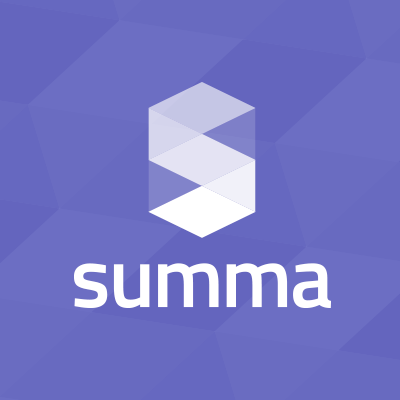Tom Hoffman is a Salesforce Consultant at Summa with deep roots in the non-profit community. Tom started the Salesforce Pittsburgh Non-Profit User Group and has over 10 years of professional experience in the Human Service & Non-Profit space, including many as the director of a foundation with a global impact.
As more non-profit organizations (NPOs) move to customer relationship management (CRM) platforms, Salesforce’s popularity in the community continues to grow. Donated user licenses, in particular, are a big draw for many small-to-medium organizations, since annual costs can be as low as $0 compared to higher-priced competitors.
Attracted by low ownership cost and a deep feature set, many organizations adopt Salesforce, but without the right guidance, the platform can leave users feeling overwhelmed. The goal of this blog series is to eliminate some of that stress by helping NPOs maximize value from their Salesforce instances. This first entry will focus on considerations of integrating donation processing with Salesforce and the related value proposition, key terms, and associated costs. Stay tuned for more NPO insights coming to the blog soon.
The Business Case for Payment Integration
A website that accepts donations and payments is a must-have for the NPOs of today, yet many agencies have payment processing tools that do not communicate with their Salesforce instance. While NPOs cite high costs, unclear pricing structures and perceived low ROI as barriers to integrated solutions, the cost ofnot integrating often exceeds the startup and implementation pricetag.
For instance, many nonprofits use a handful of employees to manage donation processing. In smaller agencies, one person likely balances these tasks with other key program and administrative functions. In other words, employees fill the role of integrator, manually performing processes that Salesforce tools could do automatically.
This manual strategy may work out okay in the beginning, but other obligations, absences and staff turnover can quickly erode an employee's ability to keep up with the demands of the task. And as a result, the NPO can be left with poor-quality, outdated and duplicate data.
Here's an example: I worked with an agency that had one employee enter donations as they were received. They stated it took 3-5 minutes to open their payment system, find the right information and create a new record in Salesforce. At 1,000 donations a year (a modest 20/week) this "less expensive" approach costs them 80+ hours a year and is dependent on one staff member. If an organization like this one could get a few hours back each week to spend on donor prospecting and relationship building, what impact would it have?
Another agency found that end-of-year report numbers were chronically wrong, resulting in a sometimes weeks-long process of digging through a year of transaction history to find missing or inaccurate records to reconcile deposits. When the agency started utilizing an integrated system, it reduced errors, offered them real-time data and eliminated the pain in their year-end reporting.
Keeping separate systems starts to feel like paying high repair bills on an old gas-guzzler because you want to avoid a down-payment for a newer, fuel efficient model. The long term cost of ownership can be much higher if you don’t make a change.
Definitions & Fee Structures
Pricing structure can be confusing when comparing online donation tools. The following definitions are meant to provide clarity when reviewing pricing models.
Setup Fees: One-time costs associated with a solution, which should cover implementation and setup inside of Salesforce. There may also be room to negotiate on these costs.
Annual Fee: An annual license cost paid each year, which usually indicates a yearly, non-refundable contract. Be sure to check for nonprofit rates.
Monthly Fee: Monthly license costs billed per month, which may indicate that a long-term contract is not required.
Transaction Fees: This is the amount you pay per transaction. It's usually expressed as a percentage (2.9%) or percentage plus transaction charge (2.2% +.30).
Payment Gateway: Some tools let you pick your payment solution, such as Authorize.net, Paypal, Stripe, etc. You pay a monthly or annual license fee for the software, then transaction fees to your payment gateway.
Merchant Account: A commercial bank account for your organization, which usually has a cost associated with it ($20-30 monthly), that is used to accept monies from your payment gateway. It's not required with all solutions—some have a preferred merchant account provider you must use. Gateways like Authorize.net require one.
Applied Cost
Applied Cost is the number that any organization needs to consider when looking at payment processing solutions. For our purposes, we’ll apply three types of fee structures at various receipt levels to find a true cost of ownership. *Note that all calculations for "percentage+transaction charge" fee structures assume a $100 average gift for calculations.
Monthly Charge & Processing Fees
|
Annual Online Receipts |
Payment Structure |
Total Cost |
Percentage |
|
$100,000 |
$25/mo + 3.75% |
$4,050 |
4.05% |
|
$500,000 |
$25/mo + 3.75% |
$19,050 |
3.81% |
|
$1,000,000 |
$25/mo + 3.75% |
$37,800 |
3.78% |
Startup Cost, Monthly Charge & BYO Processor (Paypal)
Year 1
|
Annual Online Receipts |
Payment Structure |
Total Cost |
Percentage |
|
$100,000 |
$1,000, $200/mo, 2.2%+.3 |
$5,900 |
5.9% |
|
$500,000 |
$1,000, $200/mo, 2.2%+.3 |
$15,900 |
3.18% |
|
$1,000,000 |
$1,000, $200/mo, 2.2%+.3 |
$28,400 |
2.84% |
Years 2+
|
Annual Online Receipts |
Payment Structure |
Total Cost |
Percentage |
|
$100,000 |
$200/mo, 2.2%+.3 |
$4,900 |
4.9% |
|
$500,000 |
$200/mo, 2.2%+.3 |
$14,900 |
2.98% |
|
$1,000,000 |
$200/mo, 2.2%+.3 |
$27,400 |
2.74% |
Annual Fee & BYO Processor (Paypal)
|
Annual Online Receipts |
Payment Structure |
Total Cost |
Percentage |
|
$100,000 |
$2000 + 2.2%+.3 |
$4,500 |
4.5% |
|
$500,000 |
$2000 + 2.2%+.3 |
$14,500 |
2.9% |
|
$1,000,000 |
$2000 + 2.2%+.3 |
$27,000 |
2.7% |
The above tables show that, though there are a variety of pricing models, the costs even out at higher amounts. It's important to note that the one that appears to have the lowest cost (monthly charge + processing) can actually cost an organization processing $1,000,000 and up $10,000 per million versus other seemingly costlier options.
When reviewing online donation tools, it's important to consider expected online receipts and the features a solution provides. While a basic payment processor may have a low monthly fee and processing fees, more expensive solutions that offer a variety of tools (like event management, forms, etc.) may be less expensive compared to having additional software solutions.
Online Donation Solutions
The following are examples of solutions that match the above pricing models. There are a wide variety of providers in the market and this list is provided for demonstration purposes, not necessarily as an endorsement or recommendation of these services.
Click & Pledge
A robust set of tools for for online payments, donation forms, team/individual/campaign social fundraising, and event management designed for non-profits. Requires a firm knowledge of Salesforce to implement and maintain. Other offerings with similar payment structures, like Brickwork by IATS, are less expensive, but less featured as well.
Payment Structure : Monthly ($25) + transaction fee (3.75%) + transaction charge (.35)
Soapbox Engage
A full suite of tools that includes Donation Processing, Event Management, Forms, Directories, Storefront and Petitions. High setup cost and high monthly fee, but applied pricing using Paypal shows it's especially affordable at greater than $500,000 of annual online receipts. Offers low cost mass email through Salesforce ($39/mo + .10 per 1,000 emails) and non-profit CMS solution built on Joomla.
Payment Structure: Setup Fee ($500) + Monthly Fee ($200) + *Your Payment Gateway’sTransaction Fees
Linvio Payment Connect w/ Non-Profit Toolkit
Offers an a la carte approach for NPOs to build off of their Payment Connect platform for Salesforce. One of the premier payment solutions for Salesforce, and allows you use Paypal, Authorize.net and other payment gateways. Additional services include Donation Expansion Pack, Event Management, eStore and others, for additional annual cost.
Payment Structure: Annual License Cost (varies) + *Your Payment Gateway’s Transaction Fees
*If using Authorize.net or similar payment gateways in addition to transaction fees, you may be required to have a merchant account and pay a monthly charge to the payment gateway.
If you're with a larger NPO or an NPO with more sophisticated fundraising needs, Salesforce makes a great, cost-effective base platform for developing a custom pledging and fundraising application. For example, Summa built a pledge system for the United Way of Southwestern PA that's based on the Salesforce platform, Sales Cloud and Communities. This app runs organized and integrated workplace giving campaigns with support for various United Way programs and corporate giving models, pledge incentive features, history tracking, personalization and customization along with integration to back-office payment and reporting systems.
Are you a non-profit organization looking for solutions to your unique challenges? Connect with us for even more guidance on choosing the technology that's right for you. And stay tuned to the blog for more info about Salesforce, NPOs and more.




